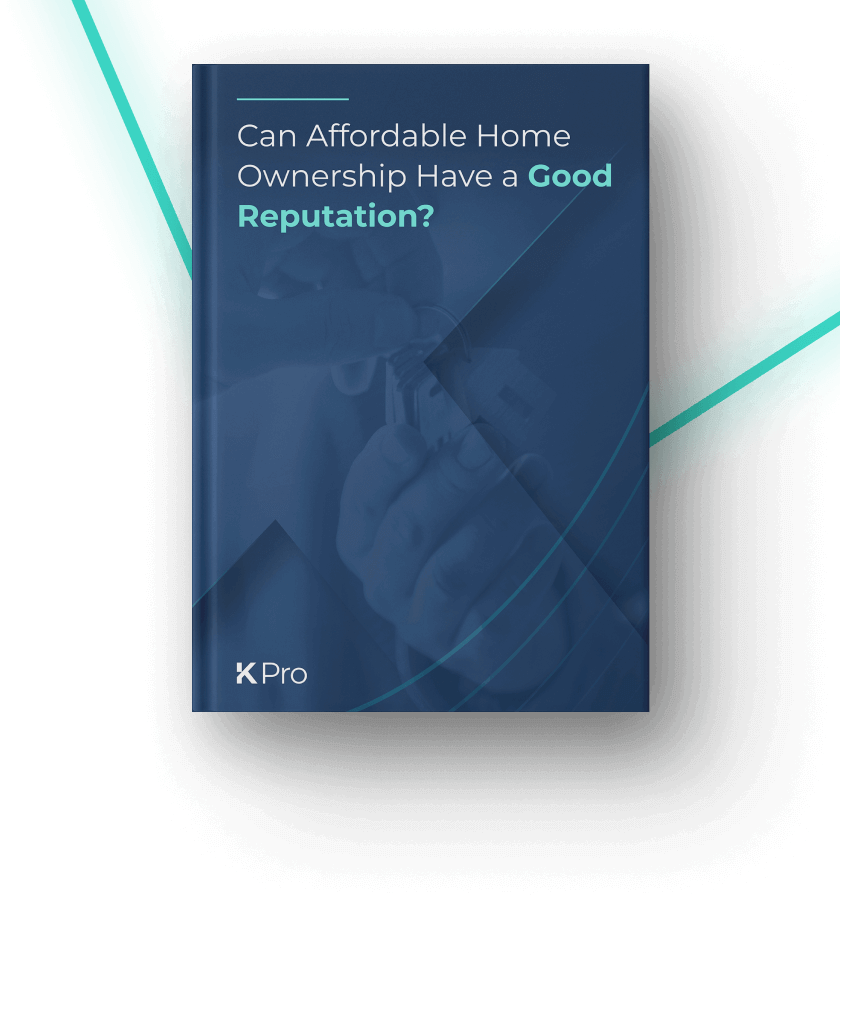
5 Tips to Improve Marketing for Housing Associations
Digital transformation is changing the way housing associations market affordable housing. Process automation, an integrated CRM system, and centralised lead collection has increased efficiency and improved customer outcomes.
Historically, housing associations have been hampered by inadequate marketing tools and underserved by software companies, and tools for commercial estate agents have been unable to solve housing association’s complex issues. On top of this, affordable housing has often been perceived as having a poorer reputation than commercial real estate.
But digital transformation is changing all that. Improved marketing helps providers create seamless, integrated and easy customer services — and on a wider level, improve perceptions of affordable housing and better outcomes for housing associations and their tenants.
This article will explain how providers can use the digital transformation to transform their marketing strategies.
Suggested reading: If you want to learn more about how technology is changing the future of affordable housing, check out our other article — How Software is Transforming the Future of Housing Associations.

1. Implement one-click listings
Managing property listings is a fundamental part of marketing affordable housing. Online listings and automation have made this easier for both providers and for customers. But this has historically been a dislocated process, with listings managed site-to-site.
Housing property platforms like Zoopla and Rightmove are critical for reaching new customers. But these platforms are geared towards the private market – and can be hard to use with affordable housing listings because of the additional information involved with shared ownership and rent to buy.
Strategies for success
You need to be able to store all your listing information in a single place, and be able to update that listing information across all the sites you’re listing on.
The estate agency market already does this through tools, like Jupix and PortalHub. Affordable housing providers need this capability. But, crucially, these tools need to be able to handle the additional information complexities of affordable housing, including:
- Affordability criteria
- Minimum share percentage
- Staircasing projections
- Tenure type
- Prioritisation and eligibility criteria
Benefits of this include:
- Simplified workflows
- Maximised market reach
- Time savings, allowing you to redirect resources elsewhere
- Up-to-date property listings visible on all targeted platforms.
2. Centralise lead collection
Once you’ve listed your properties, they start generating interest and leads. But to access these leads, your team might need to log into five, six (or more) websites and manually collate the information before making any decisions. This takes time and effort.
This can affect your ability to reach out in a timely, personalised and effective way. You might:
- Miss leads if you can’t follow up quickly
- Not have a clear idea of which leads are best if you can’t compare across platforms
- Duplicate effort with more than one sales person reaching out — perhaps about different properties
- Follow up with leads in impersonal ways, making them think you don’t care
Strategies for success
You should centralise all leads — ideally through a lead management tool. Too often, sales teams attempt to do this manually, either through manually logging leads in your CRM or through sluggish spreadsheets.
An automated and centralised lead management system will enable you to follow up with leads in real time while reducing unnecessary administrative tasks. Ideally, this solution should be integrated with your listing tool.
Your lead centralisation tool should be:
- Integrated and API compatible with all the property platforms you use
- Able to support the complexities of affordable housing properties, which commercial tools can’t, including shared ownership contracts and additional information fields, such as ownership percentages
- Capable of grouping leads together using advanced search features, allocate groups to colleagues and automatically update lead information.
Lead centralisation also promotes clear communication with the customer across their lifecycle. Over the long-term, this can help improve the perception of the affordable housing market.
3. Integrate everything with your CRM software
You need to be able to aggregate data from all your systems and platforms into a single location. In other words, you need to pull together information about leads, customers and properties together into a single-source-of-truth. Your CRM should be able to do this, whether it’s a traditional CRM like MS Dynamics, or a solution composed of various tools.
Without this, you might be creating unnecessary additional administrative tasks through inefficient processes. Studies show that inefficient processes can waste 26% of an employee’s time1. What could your housing association do with 26% more time?
Strategies for success
Your CRM needs to work with both your listing software and your lead management tools — or be the same tool. Given the challenge of integrating with affordable housing listing platforms, CRMs typically used in the private market may not be a good fit. Alternatively, it may be a costly and time consuming exercise to configure a generic system such as MS Dynamics.
Your CRM should all work together seamlessly to provide clear visibility over all your information while providing a platform to automate outreach. Your CRM needs to be able to integrate with your listing and lead management tools. Look at the API requirements of your current CRM and compare them with potential solutions.
Benefits of an end-to-end or modular integrated CRM include:
- Efficient follow-up on new leads is easier.
- Grouping leads for future use makes marketing to them easier.
- Serving people efficiently boosts your reputation.
Pro tip: If you’re not looking for an end-to-end process integrating your property listing, lead collection and CRM processes in a single place, there are also modular solutions. These can be added to existing CRM software in a flexible and integrated way.
Want to transform your customer experience? Download our brand new eBook Can Affordable Home Ownership Have a Good Reputation to learn how.
4. Automate and personalise your outreach
Affordable housing can be complicated, for the customer and for providers. So it’s important to send tailored information that can help customers navigate potential properties and access the information they want.
On the provider side, this complexity often means using time-consuming manual processes. Digital transformation is changing this, with automation and personalisation.
Automation frees up time for sales teams to focus on leads — personalisation helps convert those leads. According to one study, businesses that use automation to nurture leads can increase qualified leads by 451%2.
Meanwhile, 71% of customers are frustrated by impersonal experiences when shopping online3. And a house is one of the most important ‘purchases’ a customer will make in their lifetime. This process often starts online.
- 98% of marketers believe personalisation helps to advance customer relationships.4
- 96% of companies think personalisation can improve email marketing performance.5
- Including personalised subject lines in your emails improves open rates by 26%.6
Strategies for success
Process automation and personalisation is particularly important in the affordable housing market due to the complexity of ownership schemes and processes. It begins with centralising your lead management into one place, which helps you apply automation and personalise data. To do this, you need to:
- Attain data from leads through digital workflows, which will help you to personalise your outreach
- Link that data with automation tools, for example setting up email campaigns, to follow up with leads
Once this is done, you can further smooth the administrative process with features such as e-signing documents and customised internal workflows can free up further time for investment in personalised outreach.
Once you have a centralised system for your listings and leads, you can use CRM capabilities to personalise your outreach. You can automate:
- Responses to requests for information about properties
- Viewing reminders and instructions
- Follow-up messages after viewings
- Sending assessment forms and purchase documents
- Marketing email targeting previous leads for new developments
- Scheduled check-ins for current tenants
Pro tip: Personalisation and automation has historically been widely used by private developers offering private sale and rent. By utilising automation and personalisation, affordable housing providers can help improve the market’s reputation — in both the sales process and once customers are in the property.
5. Embrace self-service
40% of people want to use self-service systems7 and 88% expect them.8 Giving people the ability to access their own data and choose how to engage with your platform empowers customers. By providing a greater sense of control, customers feel a great sense of agency over their decision-making.
Strategies for success
Self-service in the affordable housing market isn’t the same as the self-service checkout at the supermarket — here, it’s about providing direct information and communication tools so customers feel in control. Benefits include:
- Infinitely scalable compared to a support team
- Enables support for more customers with a smaller team
- Collect data about common pain points.
A self-service portal provides customers with the information they want when they want it. You can serve your customers better and also gain visibility over the specific requests your customers make most often. This enables more strategic development of better support where it’s needed most.
Your self-service portal should be customised to help people from the beginning of their home search right through their entire shared ownership journey. Customers should be able to access and manage:
- Personal details
- Marketing preferences
- Listings and properties
- Viewings and appointments
- Documentation status and requirements
- Moving in arrangements

Technology allows you to focus on people
Marketing is ultimately about delivering quality experiences and information to people. Everything you do should be about helping people find the right homes. Technology, and the strategies suggested above, will help you do this more efficiently — freeing you up to spend more time serving customers.
The complexity in the affordable housing market, compared with the private market, means that many of the typical tools haven’t been a good fit. This has fed into customer perception of affordable housing, and its reputation.
But technology offers an opportunity to change this. By creating a streamlined process for homeseekers, customer experiences improve. And by improving efficiency for providers, time and resources can be reallocated to focus on other challenges.
KPro is a listing platform designed specifically for the affordable home market. Designed to be the best CRM for affordable housing providers, KPro was originally developed as an in-house solution to help affordable housing providers interface with Keaze.
KPro is expanding to deliver the capabilities, which have long been enjoyed by the commercial housing market, to the wider industry. Whether providers need an end-to-end process or a flexible module-by-module solution, KPro can help. Talk to an expert today to discover how.
1 How inefficient processes waste nearly a third of employees’ time – Financial Director
225 Jaw-Dropping Marketing Automation Stats [Data]
356 Top Personalization Statistics: Facts And Trends For 2022
4Meet Marketing Cloud Personalization powered by Interaction Studio.
513 Surprising Email Personalization Statistics [Infographic] | Social Media Today
6New Rules of Email Marketing | Campaign Monitor
7The Value of Customer Self-Service in the Digital Age
8Customers: opinion on self-service portal usage by brands 2018 | Statista
About The Author
Jess joined Keaze as Marketing Manager early in 2022, passionate about utilising creative digital solutions to create a more inclusive market for buyers and providers alike.







